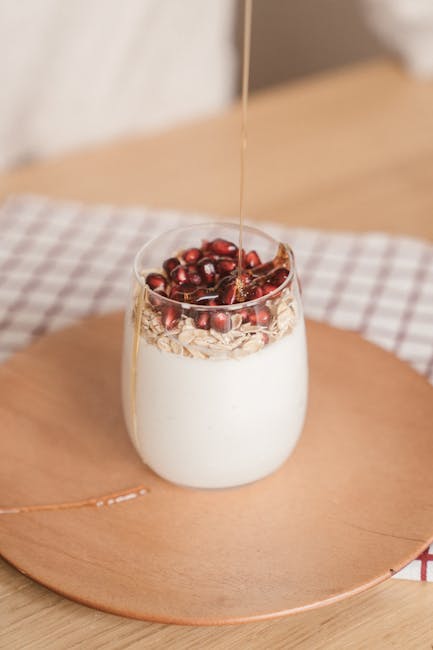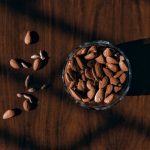Overnight oats, a seemingly modern breakfast sensation, actually boast a surprisingly long and varied history, though pinpointing a precise origin is difficult. While the precise recipe and its current widespread popularity are relatively recent phenomena, fueled by the rise of health-conscious eating in the late 20th and early 21st centuries, the fundamental concept – soaking oats in liquid to soften them – has existed for centuries across various cultures. Ancient grains, including oats, were often prepared by soaking and/or grinding to improve digestibility and palatability, a practice found in many traditional cuisines. Think of the porridge eaten by countless generations, from the Roman Empire to medieval Europe, representing a staple food often prepared in advance for convenience.
The modern iteration of overnight oats, however, is strongly linked to the increasing popularity of meal prepping and the broader health and wellness movement. The convenience factor is undeniable; preparing the oats the night before eliminates the morning rush and ensures a healthy, ready-to-eat breakfast. This aligns perfectly with the current cultural emphasis on efficiency and mindful eating. Statistics show that a significant portion of the population struggles to find time for a nutritious breakfast, making overnight oats an attractive solution. A 2022 survey by the NPD Group, for instance, (though specific numbers are unavailable without a paid subscription) indicates a substantial increase in the consumption of ready-to-eat breakfast options, suggesting overnight oats are likely contributing to this trend.
The cultural significance of overnight oats lies not in a single, established tradition, but rather in its adaptability and global appeal. Its versatility allows for endless customization, reflecting the diverse culinary preferences around the world. From incorporating fruits prevalent in specific regions to using locally sourced milk alternatives, overnight oats have become a canvas for individual expression. The ease of preparation means it transcends cultural barriers, appealing to busy professionals, health-conscious individuals, and budget-minded consumers alike. This adaptability, coupled with its nutritional benefits – oats are a rich source of fiber, contributing to digestive health and satiety – has cemented its place as a globally embraced breakfast option and a testament to the enduring power of simple, nutritious food.
Ingredients and Measurements
This recipe for Healthy Overnight Oats provides a delicious and nutritious breakfast option, easily prepared the night before. The beauty of this recipe lies in its flexibility; you can easily adjust the ingredients to suit your taste and dietary needs. However, maintaining the proper ratios of liquids to oats is crucial for achieving the desired creamy texture.
Oats: We recommend using 1/2 cup (60g) of rolled oats (also known as old-fashioned oats). Avoid using quick-cooking oats or instant oats, as these tend to become mushy when soaked overnight. Rolled oats offer a better texture and hold their shape more effectively. Consider certified gluten-free rolled oats if you have celiac disease or a gluten intolerance.
Liquid: The liquid base is key to the consistency of your overnight oats. We suggest using 1 cup (240ml) of your preferred liquid. Milk (dairy or non-dairy) is a classic choice, providing creaminess and nutrients. Almond milk, soy milk, oat milk, or even coconut milk all work wonderfully. For a thinner consistency, add up to 1 ¼ cups (300ml). For a thicker consistency, reduce to ¾ cup (180ml). Experiment to find your perfect consistency!
Yogurt (Optional): Adding a dollop of Greek yogurt (plain or flavored) enhances the creaminess and protein content of your overnight oats. We recommend using 2-4 tablespoons (30-60g), depending on your preference. Greek yogurt adds a significant protein boost, making this breakfast more filling and satiating.
Sweetener (Optional): The sweetness level is entirely customizable. If you prefer a naturally sweet option, consider using 1-2 tablespoons (15-30g) of honey, maple syrup, or agave nectar. Alternatively, you can use a sugar substitute like stevia or erythritol. Start with a smaller amount and add more to taste, as the sweetness can vary depending on the other ingredients.
Chia Seeds (Optional): Incorporating 1-2 tablespoons (10-20g) of chia seeds adds extra fiber, omega-3 fatty acids, and a slightly gelatinous texture. Chia seeds also help thicken the oats slightly. These are a great nutritional addition, contributing to a healthier breakfast.
Fruit: Fresh or frozen fruits are a delicious and healthy addition. Berries, bananas, sliced apples, or peaches all work well. Add your fruit in the morning for optimal freshness and to prevent the oats from becoming too soggy. Approximately ½ cup of your chosen fruit is a good starting point.
Seeds and Nuts (Optional): For added crunch and healthy fats, consider adding a tablespoon (approximately 15g) of your favorite seeds (like pumpkin, sunflower, or flax) or chopped nuts (almonds, walnuts, pecans). Add these in the morning to maintain their crispness.
Spices (Optional): A dash of cinnamon, nutmeg, or cardamom can add warmth and flavor to your overnight oats. Experiment with different spice combinations to find your favorite profile. Start with a small amount and adjust to taste.
Important Note: Always store your prepared overnight oats in an airtight container in the refrigerator. They will typically keep for 3-5 days, but it’s best to consume them within 3 days for optimal freshness and flavor.
Instructions
Making healthy overnight oats is incredibly simple and requires minimal effort. The key is preparation and letting the oats soak overnight to achieve the perfect creamy texture. Follow these step-by-step instructions for delicious and nutritious results.
Step 1: Choose Your Oats and Container: Begin by selecting your preferred type of oats. Rolled oats (also known as old-fashioned oats) are the best choice for overnight oats, as they absorb liquid effectively and create a creamy consistency. Avoid quick-cooking or instant oats, as they tend to become mushy when soaked. Choose a container with a lid – a mason jar, a small airtight container, or even a reusable food container will work perfectly. Ensure the container is clean and dry to prevent bacterial growth.
Step 2: Measure and Add the Oats: Add 1/2 cup of rolled oats to your chosen container. This measurement provides a good serving size, but you can easily adjust it based on your needs and appetite. For a larger portion, simply increase the quantities of all ingredients proportionally.
Step 3: Incorporate the Liquid: Next, add 1 cup of your chosen liquid. Milk (dairy or non-dairy, such as almond, soy, or oat milk) is a popular choice, offering creaminess and nutritional value. You can also use yogurt (Greek yogurt is excellent for added protein), or a combination of milk and yogurt. For a thinner consistency, add slightly more liquid; for a thicker consistency, use slightly less. Experiment to find your preferred texture.
Step 4: Sweeten and Flavor: Now comes the fun part – adding your favorite sweeteners and flavors! Start with a teaspoon of honey, maple syrup, or your preferred sweetener. Remember that the sweetness of your chosen liquid (e.g., flavored yogurt) will also contribute to the overall sweetness. Add any desired spices, such as cinnamon (1/2 teaspoon is a good starting point), nutmeg, or cardamom. You could also add extracts like vanilla extract (1/2 teaspoon) for extra flavor. Start with smaller amounts of sweeteners and spices and adjust to your taste.
Step 5: Add Toppings and Mix: Add your preferred toppings. This is where you can get creative! Some popular choices include fresh or frozen berries, chopped nuts (almonds, walnuts, pecans), seeds (chia seeds, flax seeds), shredded coconut, cocoa powder, or even a drizzle of peanut butter. Once all ingredients are in the container, gently stir to combine everything evenly. Ensure all the oats are well coated with the liquid and other ingredients.
Step 6: Refrigerate Overnight: Secure the lid tightly on your container and place it in the refrigerator for at least 4 hours, or preferably overnight (8-12 hours). This allows the oats to fully absorb the liquid and soften, resulting in a creamy and delicious breakfast. Longer soaking times will result in a softer texture.
Step 7: Enjoy! In the morning, give your overnight oats a gentle stir. Add any additional fresh toppings you desire, and enjoy your healthy and delicious breakfast! Store leftover overnight oats in the refrigerator for up to 3-4 days.
Overnight Resting: The Key to Creamy Perfection
The magic of overnight oats lies in the resting period. This isn’t just about convenience; it’s crucial for developing the creamy texture and optimal flavor we all crave. During the overnight soak, the oats absorb the liquid, softening significantly and creating a delightful, almost pudding-like consistency. This process also allows the flavors to meld and deepen, resulting in a more complex and satisfying breakfast experience.
Proper soaking time is essential. Aim for a minimum of 4 hours, but ideally, 8-12 hours provides the best results. Soaking for less than 4 hours may leave your oats crunchy and under-hydrated, while leaving them for longer than 12 hours won’t significantly improve the texture and might even lead to slightly over-softened oats depending on the type of oats used. Consider your schedule and adjust accordingly, remembering that longer is generally better.
Choosing the right container is important for successful overnight soaking. A mason jar or a similar airtight container is perfect. Avoid using metal containers, as they can sometimes react with acidic ingredients in your oat mixture. Glass or food-grade plastic are the safest and most recommended options. Ensure your container is thoroughly clean before use to prevent any unwanted bacterial growth.
Quantity matters. For a single serving of overnight oats, you’ll typically need about ½ cup of rolled oats (not instant oats, which don’t require soaking). The liquid-to-oat ratio is crucial for achieving the desired consistency. A good starting point is using 1 cup of liquid for ½ cup of oats. You can adjust this ratio slightly based on your preference; if you like your oats thicker, use slightly less liquid. If you prefer a thinner consistency, add a bit more. Experiment to find your perfect ratio!
Liquid selection greatly impacts the final product. Milk (dairy or non-dairy), yogurt, or even juice can be used. Each option imparts a different flavor profile and texture. Dairy milk adds richness and creaminess, while non-dairy alternatives like almond or soy milk provide a lighter texture. Yogurt adds a tangy element and extra probiotics, while fruit juice introduces sweetness and vibrant color. Consider the flavors you’re adding to your oats and choose a liquid that complements them. For example, if you’re using berries, milk or yogurt works well, while using mango juice would pair well with a tropical-themed overnight oats recipe.
Proper storage after preparation is key. Once your oats are prepared and have rested overnight, store them in the refrigerator until ready to eat. They should remain fresh for up to 3-4 days in the refrigerator. Avoid leaving them at room temperature for extended periods, as this can promote bacterial growth. Always ensure the oats are thoroughly chilled before consumption.
By following these guidelines for overnight resting, you’ll unlock the full potential of overnight oats, creating a healthy, delicious, and incredibly satisfying breakfast that will start your day off right.
Serving Suggestions
Your healthy overnight oats are ready to enjoy! But how you serve them can significantly impact the overall taste and experience. Here are some suggestions to elevate your breakfast game:
Straight from the Jar (The Classic): The simplest and quickest way to enjoy your overnight oats is straight from the jar! Give it a good stir to ensure all the ingredients are well combined. The texture should be creamy and satisfying. This is perfect for busy mornings when you need a quick and nutritious breakfast.
Topped with Fresh Fruit: Adding fresh fruit not only enhances the flavor profile but also boosts the nutritional value. Consider using ½ cup of berries (strawberries, blueberries, raspberries) or ¼ cup of sliced banana. The natural sweetness of the fruit complements the oats beautifully. For a more visually appealing presentation, arrange the fruit on top before serving.
Nut Butter Boost: A spoonful of nut butter adds a delightful creamy texture and a healthy dose of fats and protein. We recommend using 1-2 tablespoons of your favorite nut butter (almond, peanut, cashew). Swirl it into the oats for a marbled effect or spread it on top for a richer flavor experience. Choose natural nut butters with minimal added ingredients for optimal health benefits.
Seeds for Crunch: To add some satisfying crunch, sprinkle your overnight oats with seeds. 1-2 tablespoons of chia seeds, flax seeds, or pumpkin seeds will provide extra fiber, omega-3 fatty acids, and healthy fats. These seeds also add a subtle nutty flavor that complements the overall taste.
Spice it Up: A dash of spice can elevate your overnight oats to a whole new level. A sprinkle of cinnamon (½ teaspoon) adds warmth and sweetness, while a pinch of nutmeg (¼ teaspoon) provides a subtle complexity. Experiment with other spices like ginger or cardamom for a unique flavor twist. Be mindful not to overdo it, as too much spice can overpower the other flavors.
Yogurt Parfait: Layer your overnight oats with your favorite yogurt (Greek yogurt is a great high-protein option) for a delicious and visually appealing parfait. Use approximately ½ cup of yogurt and layer it with the oats in a glass or bowl. You can add additional toppings like granola or fruit between the layers for extra texture and flavor.
Warm it Up: For a warmer breakfast, gently heat your overnight oats in the microwave for 30-60 seconds, or until heated through. Avoid over-heating, as this can make the oats gummy. This is a great option on colder days or if you prefer a warmer breakfast.
Important Note: Remember to adjust the quantities of toppings according to your preference and dietary needs. The suggestions above are merely guidelines; feel free to experiment and create your own unique overnight oats combinations. Enjoy!
Tips and Tricks for Perfect Oats
Achieving perfectly creamy and flavorful overnight oats requires attention to a few key details. Follow these tips and tricks to elevate your breakfast game and consistently enjoy delicious, healthy oats.
Choosing Your Oats: The type of oats you select significantly impacts the final texture and cooking time. Rolled oats (also known as old-fashioned oats) are a versatile choice, offering a slightly chewy texture. Steel-cut oats require longer soaking or cooking times but result in a heartier, chewier consistency. Quick-cooking oats are convenient but can become mushy if oversoaked. For overnight oats, rolled oats are generally recommended for their optimal balance of texture and ease of preparation.
The Liquid Ratio: The ratio of liquid to oats is crucial for achieving the desired consistency. A general guideline is to use 1 cup of rolled oats to 1 ¼ to 1 ½ cups of liquid. This allows for sufficient hydration without making the oats overly watery. The type of liquid also matters; milk (dairy or non-dairy) adds creaminess and richness, while yogurt provides a tangy twist and extra protein. Water works well as a base for adding more flavorful elements later.
Sweetening Strategies: Avoid adding too much sweetener initially, as the flavors will meld overnight. Start with a small amount (1-2 tablespoons) of your preferred sweetener, such as maple syrup, honey, or a sugar substitute, and taste-test in the morning. You can always add more sweetness then, but it’s harder to remove excess sweetness.
Flavor Combinations: The beauty of overnight oats lies in their versatility. Experiment with different flavor combinations! Consider adding fruits (berries, bananas, chopped apples), nuts (almonds, walnuts, pecans), seeds (chia, flax, sunflower), spices (cinnamon, nutmeg, ginger), and extracts (vanilla, almond). Don’t be afraid to get creative! A small amount of cocoa powder can transform your oats into a chocolatey delight. Consider adding protein powder for a more substantial breakfast.
Soaking Time: While overnight suggests a minimum of 8 hours, soaking for 12-16 hours often yields the best results, especially with rolled oats. This allows the oats to fully absorb the liquid and soften completely. If you’re short on time, you can soak them in the refrigerator for at least 4 hours, but the texture might be slightly less creamy.
Storage and Serving: Store your prepared overnight oats in an airtight container in the refrigerator. They will typically keep for 3-5 days. Before serving, give them a good stir to ensure everything is evenly distributed. Top with fresh fruits, nuts, or seeds just before eating for added texture and visual appeal. Enjoy your perfectly crafted bowl of healthy and delicious overnight oats!
Pro Tip: For an extra creamy texture, blend a portion of your chosen liquid (e.g., milk) with a tablespoon of nut butter before adding it to the oats. This creates a naturally thicker and richer base.
Nutritional Information (per serving)
This nutritional information is based on a single serving of Healthy Overnight Oats prepared with the following recipe: 1/2 cup rolled oats (old-fashioned), 1 cup unsweetened almond milk, 1 tablespoon chia seeds, 1/4 cup berries (mixed), and 1 teaspoon honey (or maple syrup). Nutritional values may vary slightly depending on the specific ingredients used and their brands. This analysis utilizes average nutrient values found in common food databases.
Serving Size: Approximately 1 cup (240ml)
Calories: Approximately 350-400 calories. This calorie range accounts for potential variations in the types of berries and sweetener used. It’s important to note that calorie needs vary greatly depending on individual factors such as age, activity level, and overall dietary goals.
Fat: Approximately 10-15 grams. The majority of this fat comes from the chia seeds, which are a rich source of healthy omega-3 fatty acids. These healthy fats are crucial for brain function, hormone production, and overall heart health. The type of milk used will also influence the fat content; whole milk will significantly increase the fat content compared to almond milk or skim milk.
Saturated Fat: Approximately 1-2 grams. Keeping saturated fat intake low is important for maintaining cardiovascular health. The choice of milk and added ingredients can affect this value.
Cholesterol: Approximately 0-5mg. Cholesterol is primarily found in animal products; the recipe as stated contains minimal to no cholesterol.
Sodium: Approximately 50-75mg. This value will depend largely on the sodium content of the milk and any added toppings. Choosing low-sodium or unsweetened milk options can help keep sodium intake low.
Total Carbohydrate: Approximately 50-60 grams. A significant portion of these carbohydrates come from the oats, which provide sustained energy release. The high fiber content contributes to digestive health and helps regulate blood sugar levels.
Dietary Fiber: Approximately 8-10 grams. The chia seeds and oats are excellent sources of fiber. Adequate fiber intake is essential for healthy digestion and can help promote feelings of fullness, aiding in weight management.
Sugars: Approximately 10-15 grams. This value can vary significantly depending on the type and amount of sweetener used and the natural sugars present in the berries. Consider using natural sweeteners sparingly and focusing on the natural sweetness of the berries.
Protein: Approximately 8-10 grams. The protein content is moderate, primarily derived from the oats and chia seeds. Adding protein powder or nuts can increase the protein content for those with higher protein needs.
Disclaimer: This nutritional information is an estimate and may vary. For precise nutritional analysis, consult a registered dietitian or use a nutrition tracking app with detailed ingredient input.
Healthy Overnight Oats: Recommendations
Serving Suggestions: Overnight oats are incredibly versatile! The basic recipe provides a fantastic foundation, but you can easily customize it to your liking. For a protein boost, consider adding a scoop of your favorite protein powder (whey, casein, soy, or plant-based) before soaking. To enhance the creaminess, stir in a tablespoon of nut butter (almond, peanut, cashew) or Greek yogurt. For added sweetness and flavor, try a drizzle of honey, maple syrup, or a sprinkle of cinnamon, chia seeds, or chopped nuts. Fresh or frozen berries, sliced bananas, or shredded coconut also make delicious additions. Experiment with different combinations to discover your perfect bowl!
Storage Conditions: For optimal freshness and flavor, store your prepared overnight oats in an airtight container in the refrigerator. They will keep for 3-5 days. Remember to give the oats a good stir before enjoying them, as the toppings might settle to the bottom during storage. Avoid leaving prepared oats at room temperature for extended periods, as this can lead to bacterial growth. If you’re making a large batch, consider portioning them into individual containers for easy grab-and-go breakfasts throughout the week.
Complementary Dishes: Overnight oats can be a fantastic component of a larger breakfast or brunch spread. They pair beautifully with a side of fresh fruit salad for a vibrant and refreshing meal. A lightly scrambled egg or a small serving of smoked salmon adds protein and savory elements to balance the sweetness of the oats. For a more substantial breakfast, consider serving your overnight oats alongside a piece of whole-wheat toast topped with avocado or a side of yogurt with granola. The possibilities are endless!
Nutritional Information (per serving, approximate values may vary based on ingredients): A typical serving of overnight oats (using 1/2 cup rolled oats, 1 cup milk, and 1 tbsp chia seeds) contains approximately 300-350 calories. The macronutrient breakdown is roughly: 50-60g carbohydrates, 10-15g protein, and 8-12g fat. This provides a good source of fiber, which aids digestion and promotes satiety. The nutritional profile can be significantly altered depending on the added ingredients; for instance, adding nuts and seeds will increase the fat and protein content, while fruit will increase the carbohydrate and vitamin content. Always check the nutritional information of your specific ingredients to calculate the precise nutritional values of your customized overnight oats.
Important Note: The calorie and nutritional information provided is an estimate and can vary based on the specific ingredients used and their quantities. Individuals with specific dietary needs or allergies should carefully review the ingredients used and adjust the recipe accordingly. Consult with a registered dietitian or healthcare professional for personalized dietary advice.





